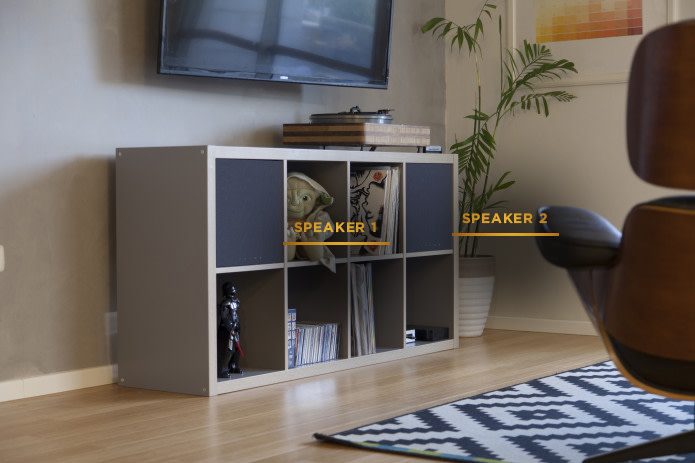Here's a horn sub that fits into an Ikea Expedit.
I am doing an Opsodis setup, and so this 'sub' is really designed for midbass duty, not for sub duty. I'm actually sitting on a subwoofer, so this box goes to my left and to my right and it's designed to do midbass duty between my sub and my Synergy horns.
This is an xpost from someone else's thread on Ikea speakers; I didn't want to clutter up their thread with my content.

Here's the design. It's a clone of the Danley BDEAP, but shrunk to fit into an Ikea Expedit. The drivers are a Dayton ND91. The horn is tuned to 180hz. The sealed part of the enclosure is 4" PVC that's been sliced in half. The wood is 1/2". You can use MDF or plywood.

I got started by using Eazy Horn. These are the params it gave me.

Here's the hornresp parameters
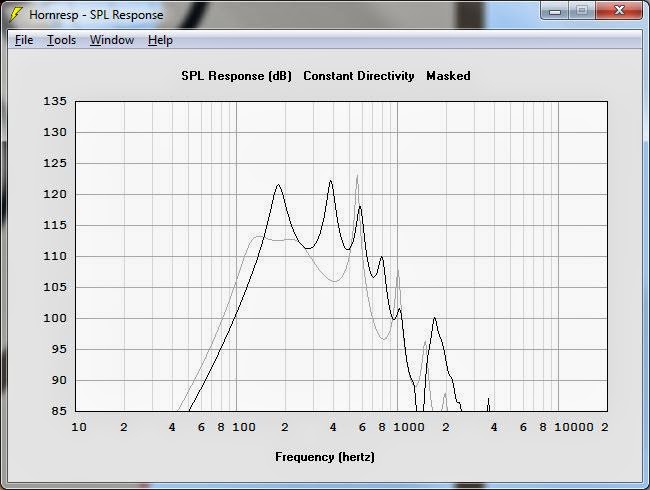
Here's a comparison of the output of the horn with two woofers, versus a bandpass box with four woofers. The bandpass box plays lower and is smoother, but the horn is louder. The horn sim shows some nasty peaks. In my experience, I've found that hornresp exaggerates peaks. So hopefully it's not that bad IRL. Also, I would like to use at least two per side, for midbass impact, and arraying the horns will smooth the response. The BDEAP is designed to be arrayed.
I am doing an Opsodis setup, and so this 'sub' is really designed for midbass duty, not for sub duty. I'm actually sitting on a subwoofer, so this box goes to my left and to my right and it's designed to do midbass duty between my sub and my Synergy horns.
This is an xpost from someone else's thread on Ikea speakers; I didn't want to clutter up their thread with my content.

Here's the design. It's a clone of the Danley BDEAP, but shrunk to fit into an Ikea Expedit. The drivers are a Dayton ND91. The horn is tuned to 180hz. The sealed part of the enclosure is 4" PVC that's been sliced in half. The wood is 1/2". You can use MDF or plywood.

I got started by using Eazy Horn. These are the params it gave me.

Here's the hornresp parameters

Here's a comparison of the output of the horn with two woofers, versus a bandpass box with four woofers. The bandpass box plays lower and is smoother, but the horn is louder. The horn sim shows some nasty peaks. In my experience, I've found that hornresp exaggerates peaks. So hopefully it's not that bad IRL. Also, I would like to use at least two per side, for midbass impact, and arraying the horns will smooth the response. The BDEAP is designed to be arrayed.

Here's the frequency response. The blue line is the horn sub. The green line is my Kef sub, and 8" vented box. I use the Kef as a reference when I do sub measurements.
The Kef goes lower and the Kef is smoother, but what I really wanted from this box was something with high efficiency and high output. My mains are Synergy horns, and I didn't want to 'pad' the Synergy horns, so the midbass needed to be LOUD. Based on this measurement, it looks like this midbass horn is giving me about seven more decibels output in the passband than the 8" Kef. The Kef enclosure is also twice as big.
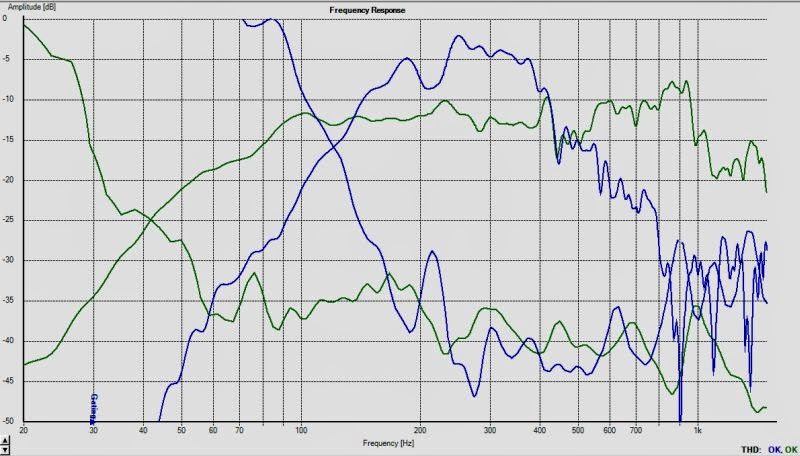
Here's a comparison of the distortion of the two enclosures. The THD of the Kef is about 20-25dB below the fundamental; the THD of the Ikea horn is about 10dB better than that. The THD of both boxes goes up like a hockey stick as you get lower in frequency, due to excursion.
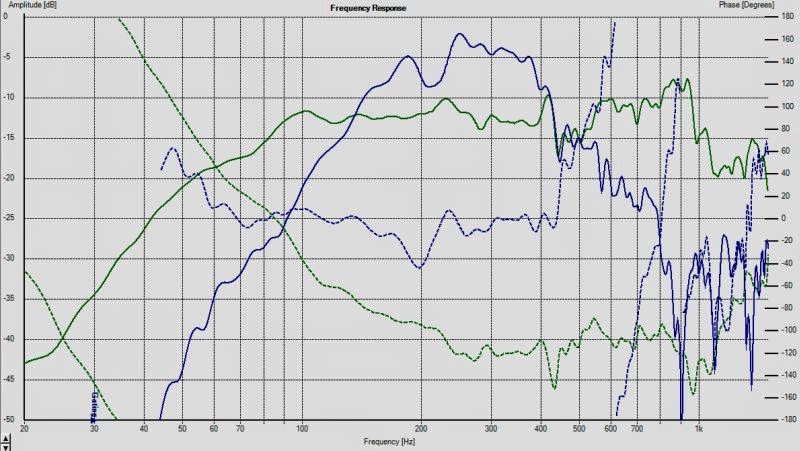
Horn subs can be a p.i.t.a. to build, but I appreciate this curve. This is the phase response of the 8" Kef and the Ikea midbass horn. Note that the Ikea midbass horn doesn't have the phase rotation that the Kef does. This is because the Kef is vented.
Cost was a big factor for this sub. The wood in the sub was less than a dollar, the glue was twenty five cents, the drivers are $24 each. Total cost : about $50.
For comparison's sake, a good prosound 8" like the B&C 8NDL51 is $119. The B&C will require a passive filter, which costs about $10. So the B&C will be about as efficient, and has higher maximum output, but it costs almost three times as much.
I did some hornresp sims, and this box seems fairly compatible with other woofers. For instance, the response with the Faital 3FE20 is basically the same as the Dayton. Due to the simple layout of the box, you could probably get the cost down to about $30 a channel if you used a woofer that cost less than $15 each. There are some good candidates from Dayton and MCM.

This gets particularly interesting when you realize how easy the horn is to build, and how it's designed to be arrayed, and how the Ikea Expedit makes creating an array very easy.
For comparison's sake, a good prosound 8" like the B&C 8NDL51 is $119. The B&C will require a passive filter, which costs about $10. So the B&C will be about as efficient, and has higher maximum output, but it costs almost three times as much.
I did some hornresp sims, and this box seems fairly compatible with other woofers. For instance, the response with the Faital 3FE20 is basically the same as the Dayton. Due to the simple layout of the box, you could probably get the cost down to about $30 a channel if you used a woofer that cost less than $15 each. There are some good candidates from Dayton and MCM.

This gets particularly interesting when you realize how easy the horn is to build, and how it's designed to be arrayed, and how the Ikea Expedit makes creating an array very easy.
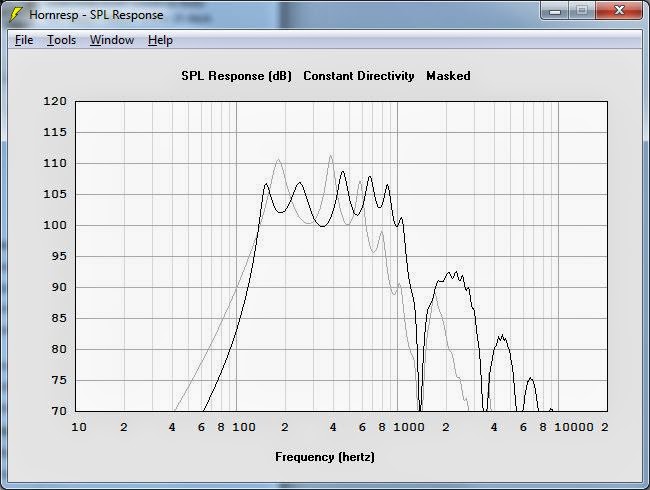
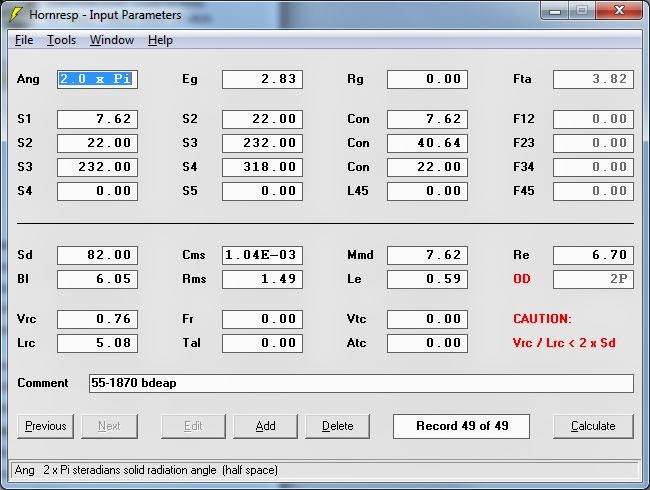
Out of curiosity, I tried the same enclosure with the MCM 55-1870. (MCM Audio Select 5'' Aluminum Cone Woofer | 55-1870 (551870) | MCM Audio Select) Using the MCM gets the cost down by 50%, to less than $25 per horn. (This assumes you're building at least two, and you're paying $11.49 per woofer.)
The MCM has wider bandwidth and flatter predicted response than either the Dayton *or* the Faital, so it looks like a solid choice. Main issue is getting the magnet to fit really.
that's pretty cool - my town has no Ikea -
Fun fact : Nevada is one of the fastest growing states in the USA. And has no Ikea. Go figure.
Fun fact 2: the best Ikea in the USA is in Portland. There's no sales tax, and it's less than a mile from Washington, which has no income tax.
I still don't understand the geometry.
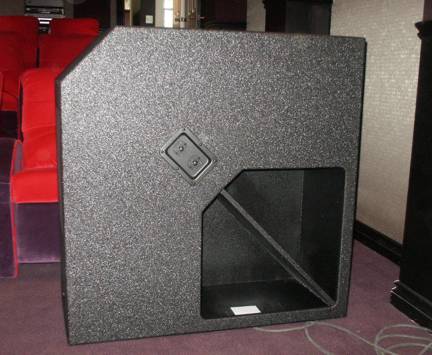
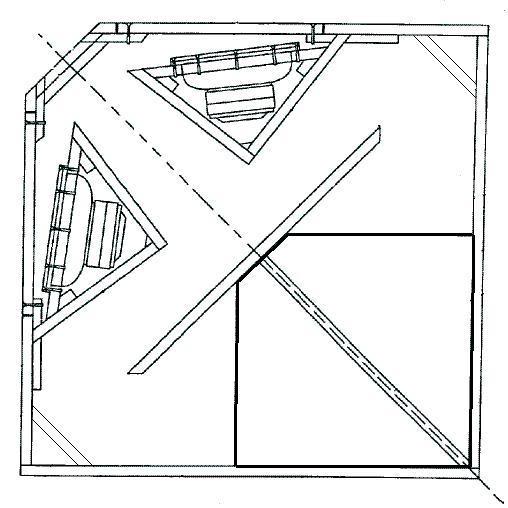
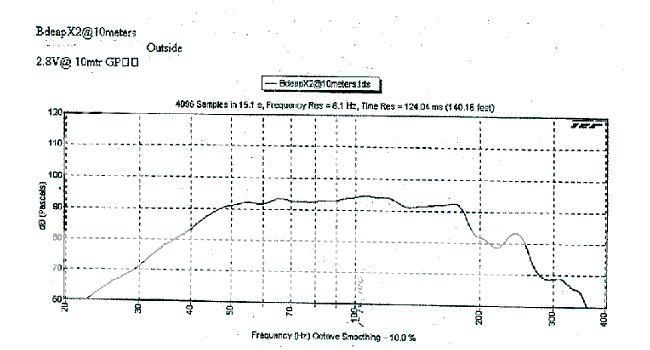
It's a Sound Physics Labs B-DEAP


Just smaller. 13" x 13" x 6.5" to be exact. Fits in an Ikea Expedit.
And instead of the B-DEAP's nearly two octave passband, the smaller unit has just over one octave of range, with rapid phase "rotation" (around 540 degrees) centered in the critical 450-900 Hz upper crossover region. Note that the Kef doesn't have the upper phase rotation that your "Ikea" midbass horn doesIt's a Sound Physics Labs B-DEAP
Just smaller.
And instead of the B-DEAP's nearly two octave passband, the smaller unit has just over one octave of range, with rapid phase "rotation" (around 540 degrees) centered in the critical 450-900 Hz upper crossover region. Note that the Kef doesn't have the upper phase rotation that your "Ikea" midbass horn does.
It costs less than $50, I made it out of some particle board that Home Depot had marked down to fifty cents, it has no crossover whatsoever and it's nearly as loud as a $120 B&C. I built the box in less than 120 minutes and I measured it while the glue was still drying.
It ain't perfect but it ain't too shabby either.
Also, the exit of the horn is an homage to your 'Keystone' subwoofer.
I get it now. Thanks.
Sweet!
An externally hosted image should be here but it was not working when we last tested it.
Here's the layout of the 'real' bdeap, with pathlengths you can plug into Hornresp
You can scale it down or up easily; for instance if you want a higher cutoff and a smaller box just multiply the pathlengths by 50% or 75% or whatever. Just plug it into Hornresp and see what you get. The box is insanely simple to build so worst case scenario you're out two hours of your time.
From this post here : Car Audio | DiyMobileAudio.com | Car Stereo Forum - View Single Post - Sealed Box versus Infinite Baffle
I put a sub in an Expedit... 
removed the shelved and jammed in a PSB 6i
removed the shelved and jammed in a PSB 6i
An externally hosted image should be here but it was not working when we last tested it.
It costs less than $50, I made it out of some particle board that Home Depot had marked down to fifty cents, it has no crossover whatsoever and it's nearly as loud as a $120 B&C. I built the box in less than 120 minutes and I measured it while the glue was still drying.
Patrick Bateman,
I love your attitude to building quickly and cheaply, and I also share what can be best described as a friend in grad school used to say "If it can't be built in a hurry, it's probably not worth building." He was referring to proof of concept experiments in the lab... not everything in general, but it certainly applies to exploration of new speakers.
Similarly, I had never built or listened to a slot loaded push-pull band pass sub so I built one in 120 minutes out of 1 in thick XPS foam sheathing insulation from Home Depot and measured it while the glue was drying
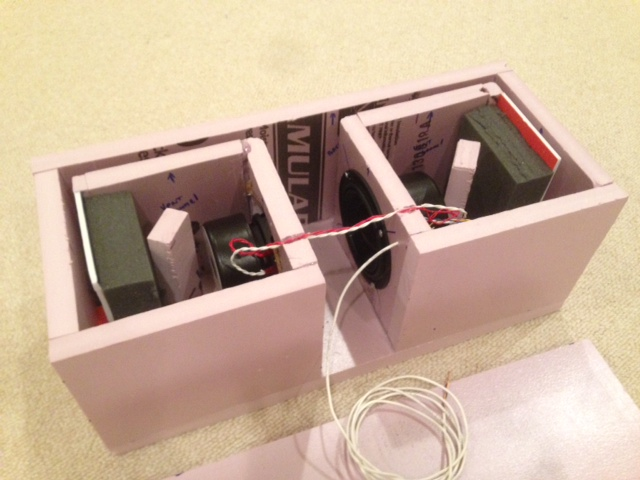
I will take a crack at a model of the B-DEAP horn in Akabak and see what I can do with it. Neat idea to use as a midbass horn.
If you want a simple horn, take a look at the can't get much simpler than an isosceles triangle horn that Legis came up with and I sim'd. It kicks a punch in the 100 Hz to 500 Hz range. More info on that here: http://www.diyaudio.com/forums/subwoofers/119854-hornresp-464.html#post3979664
Regards,
X
Just curious, but is the BDEAP measurements above for a single driver horn?
I know it has two drivers but it seems like 2 small designs folded uniquely within the confines of an external structure. I put this design in HornResp and used a Beyma 12" pair and after adjusting a few things came up with a decent design. Nothing to write home about. I did nothing beside move sliders to get some extension and a decent looking response.
That being said I was happy to finally see 130db's from a pair of 8mm 12's. So I started to wonder how I would fold this simulation and thought I should ask about the design before getting my hopes up.
I know it has two drivers but it seems like 2 small designs folded uniquely within the confines of an external structure. I put this design in HornResp and used a Beyma 12" pair and after adjusting a few things came up with a decent design. Nothing to write home about. I did nothing beside move sliders to get some extension and a decent looking response.
That being said I was happy to finally see 130db's from a pair of 8mm 12's. So I started to wonder how I would fold this simulation and thought I should ask about the design before getting my hopes up.
Yes the measurements are for one horn with two drivers.
Wired in parallel iirc.
Yes, the BDEAP is basically two horns, in one box, mirrored across a line that extends from the top left of the cabinet to the bottom right of the cabinet.

My illustration uses a snapshot of the patent, and that dotted diagonal line dividing it in half is there in the patent.
USD524797.pdf
Here's the BDEAP patent, filed ten years ago while Danley was at Sound Physics Labs

I don't know what the interior the DSL BC subs looks like, but wouldn't be surprised if they were similar to an array of BDEAPs
Wired in parallel iirc.
Yes, the BDEAP is basically two horns, in one box, mirrored across a line that extends from the top left of the cabinet to the bottom right of the cabinet.

My illustration uses a snapshot of the patent, and that dotted diagonal line dividing it in half is there in the patent.
USD524797.pdf
Here's the BDEAP patent, filed ten years ago while Danley was at Sound Physics Labs

I don't know what the interior the DSL BC subs looks like, but wouldn't be surprised if they were similar to an array of BDEAPs
Last edited:
...and how the Ikea Expedit makes creating an array very easy.
Er, where are the subs in that picture? The 4 brown boxes per side? I feel like I'm missing something obvious…
Patrick Bateman,
I actually love this little project of yours! Not so much for what it is, rather what it represents! One thing I really feel is missing from DIYAudio forums is a budget gourmet sub-section of each main topic category.
In reality most of us in this hobby can whip up decent, if not awesome projects with mega-$ super-drivers.
What would be nice to see is lots of decent to awesome outcomes on the cheap. IE: using Dayton, MCM, Chinese drivers & other affordable ancillary hdw.
A year or two ago Jbell or someone modeled a small FLH sub using two MCM 8" that showed a really nice response curve and SPL. I even commented as to why the apparent lack of interest. That thread died without anyone building it due to lack of interest - sad!
I actually love this little project of yours! Not so much for what it is, rather what it represents! One thing I really feel is missing from DIYAudio forums is a budget gourmet sub-section of each main topic category.
In reality most of us in this hobby can whip up decent, if not awesome projects with mega-$ super-drivers.
What would be nice to see is lots of decent to awesome outcomes on the cheap. IE: using Dayton, MCM, Chinese drivers & other affordable ancillary hdw.
A year or two ago Jbell or someone modeled a small FLH sub using two MCM 8" that showed a really nice response curve and SPL. I even commented as to why the apparent lack of interest. That thread died without anyone building it due to lack of interest - sad!
- Status
- This old topic is closed. If you want to reopen this topic, contact a moderator using the "Report Post" button.
- Home
- Loudspeakers
- Subwoofers
- Ikea Midbass Horn
